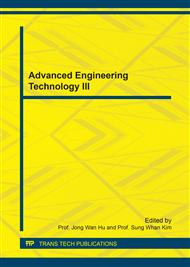p.81
p.88
p.94
p.100
p.105
p.111
p.118
p.125
p.131
Analysis on the Free Forging Process of the Heavy Rack for Ship Lift
Abstract:
Heavy racks are the main load-bearing components and play more important position in great engineering equipments. Along with the requirement of the equipment efficiency promotion, the large-scale trend of rack is obvious. Among them, the rack for the Chinese Three Gorges ship lift total up to 5000mm. At present, the large rack mainly made by casting. Compared with the casting, the forging rack can greatly improve the mechanical properties and the service life. The aim of this work is feasibility analysis of free forging for large rack, as large T-shape section forging. Four possible forging schemes were simulated and compared by the finite element method, and the possible defects of all the schemes and their application scope were explored. Finally, it was proved that the free forging of heavy rack was realized by simple dies.
Info:
Periodical:
Pages:
105-108
Citation:
Online since:
June 2017
Authors:
Keywords:
Price:
Сopyright:
© 2017 Trans Tech Publications Ltd. All Rights Reserved
Share:
Citation:


